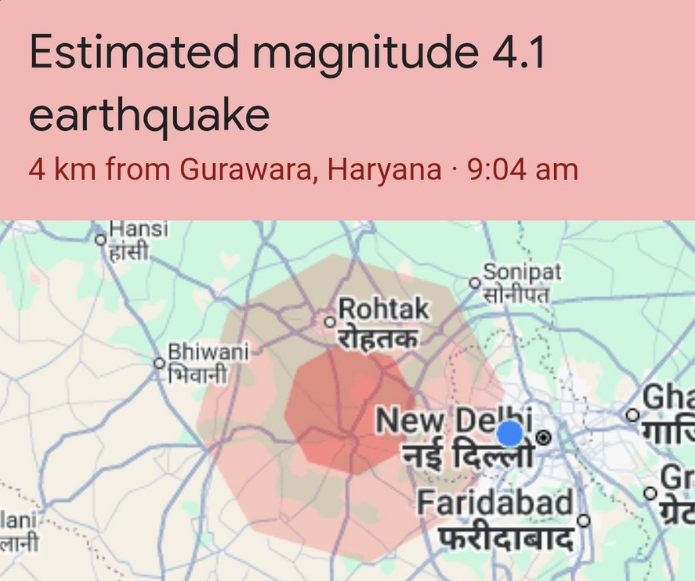Panic gripped the Delhi-NCR region on Thursday morning after a magnitude 4.4 earthquake struck near Jhajjar in Haryana, triggering strong tremors across several cities. The quake, which occurred at 9:04 am, sent people in Delhi, Noida, Gurugram, Ghaziabad and other parts of the National Capital Region rushing out of homes and offices. Fortunately, there have been no immediate reports of injuries or property damage.
According to the National Center for Seismology (NCS), the earthquake originated at a shallow depth of 10 kilometers beneath the surface. Apart from the NCR, tremors were also felt in adjoining states like Uttar Pradesh and Rajasthan.
Eyewitnesses described the experience as frightening. “We felt the tremors clearly. The whole vehicle started shaking, and it was really strong,” a resident told the news agency ANI. Another individual in Ghaziabad likened the experience to someone shaking the entire shop he was in. Social media was flooded with similar accounts, with many users reporting cupboards and furniture shifting during the quake.
Thursday’s tremors come just months after a 4.0 magnitude quake was recorded on February 17, with its epicentre located near Dhaula Kuan in south Delhi. Seismological data from the NCS indicates that the area within a 50 km radius of Dhaula Kuan has recorded over 440 earthquakes between 1993 and 2025, underscoring the region’s vulnerability to seismic events.
Experts attribute this recurring seismic activity to Delhi’s geographical and geological makeup. The Bureau of Indian Standards classifies India into four seismic zones, with Zone V being the most severe. Delhi and the surrounding NCR fall under Zone IV, which denotes high seismic risk.
The capital’s proximity to the Himalayan fault system, one of the most seismically active zones in the world, contributes to the frequency of earthquakes. Additionally, the region is intersected by several fault lines, including the Delhi-Moradabad, Mathura and Sohna faults. In neighbouring Haryana, as many as seven fault lines have been identified, further compounding the region’s susceptibility.
Although Thursday’s quake did not result in any casualties, experts urge continued vigilance. “The seismic profile of this region makes it important for citizens and authorities to be earthquake-prepared,” a geologist said.
Authorities have confirmed that all emergency services are on standby and urged residents to remain calm but cautious. Meanwhile, structural assessments of key buildings and infrastructure are underway as a precautionary measure.
As tremors become a more frequent phenomenon in the region, the importance of disaster awareness and preparedness continues to grow for residents of Delhi-NCR.








